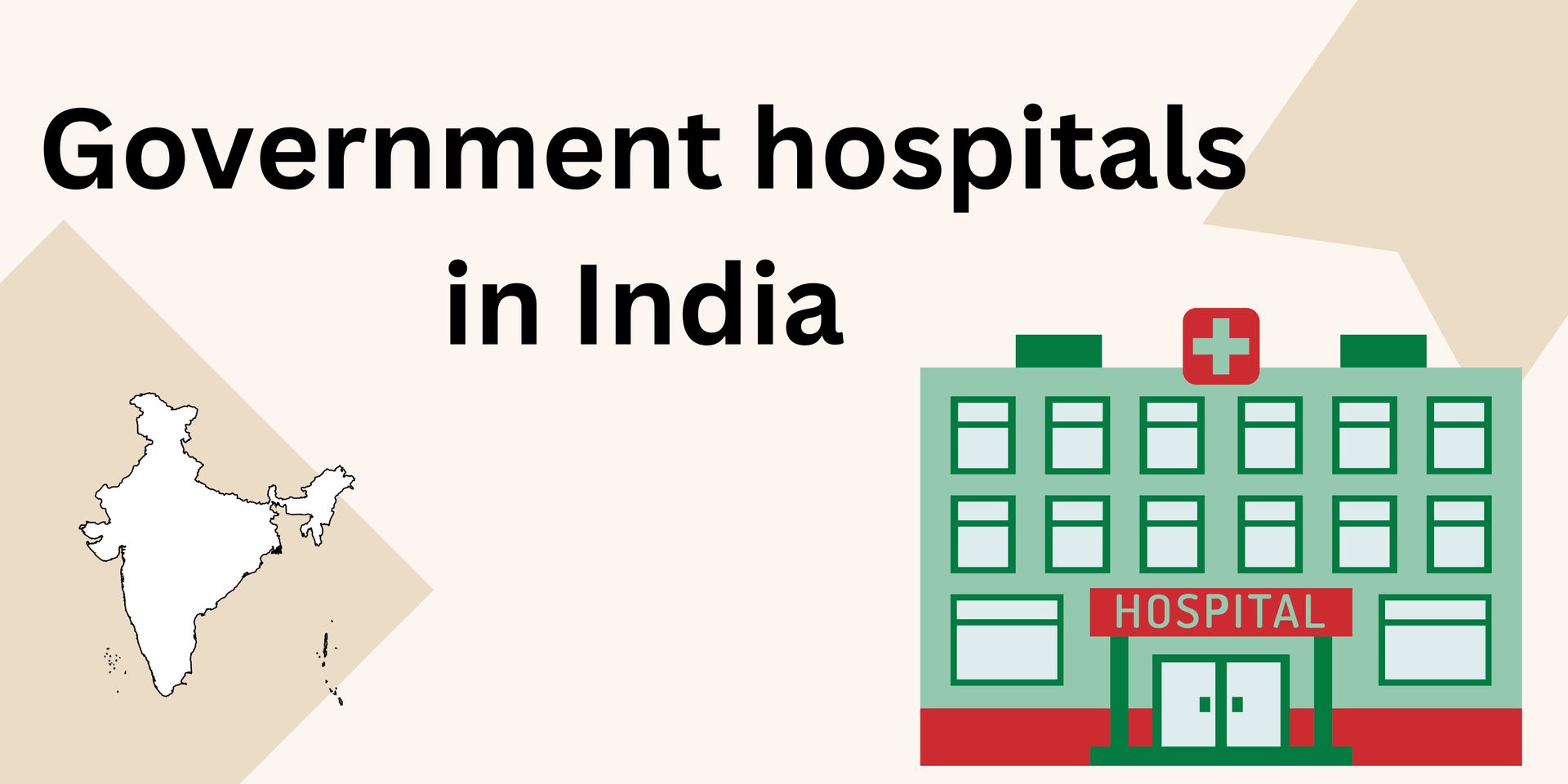India, a nation bustling with vibrant life, faces a hidden threat that is silently creeping into its homes and hearts – the alarming rise of lifestyle diseases. These diseases aren't limited to the wealthy anymore; they affect people from all walks of life, posing a major challenge to our nation's health.
But what exactly are lifestyle diseases?
They are chronic conditions that stem from our daily choices – like poor diets, lack of exercise, and stress. These choices lead to problems such as diabetes, hypertension, obesity, and even cancer.
How Prevalent are Lifestyle Diseases in India?
Over 61.8% of all deaths in India are attributed to lifestyle diseases. This is a sharp rise from 37.09% in 1990.
Let’s look at a few alarming statistics
Also, there are regional variations. Like, urban areas generally have a higher prevalence of lifestyle diseases compared to rural areas.
Why is this happening?
Rapid economic growth has shifted us from active lives to desk jobs. Processed foods and sugary drinks have replaced home-cooked meals. Stress, a constant companion in our fast-paced world, exacerbates the situation. Explore our blog to get better insights into it.
Become aware of the most common lifestyle diseases in India and get tips on how to avoid them
Which Specific Lifestyle Diseases Are Most Common in India?
The most common lifestyle diseases are:
Cardiovascular Diseases (CVDs):
Cardiovascular diseases claim over 25% of all deaths in India, making it the leading cause of mortality. Around 35% of the population suffers from hypertension, with the number expected to reach 220 million by 2025.
Some of the common CVDs in India are:
- Coronary Artery Disease
- Myocardial Infarction/ Heart Attack
- Rheumatic Heart Disease
- Peripheral Artery Disease
- Cardiomyopathy
- Congenital Heart Diseases
Diabetes Mellitus:
India has one of the highest diabetes burdens globally. Both type 1 and type 2 diabetes are prevalent, with type 2 being much more common. According to estimates, over 77 million adults in India had diabetes in 2019. Over 11% of people above 20 years of age have diabetes.
The majority of diabetes cases in India are type 2 diabetes. It is often associated with lifestyle factors such as unhealthy diet, physical inactivity, and obesity. Genetic factors also play a role. While less common than type 2 diabetes, type 1 diabetes also affects a significant number of individuals in India. It is an autoimmune condition.
Diabetes complications include cardiovascular diseases such as heart attacks and strokes. It can also cause kidney disease, nerve damage, eye damage, foot problems and an increased risk of infections. Studies show that young Indian people are succumbing lo lifestyle diseases like diabetes as young as 18-19 years because of their sedentary habits, mobile and screen addiction.
Respiratory conditions:
Respiratory conditions are a significant public health concern in India. They include:
- Chronic Obstructive Pulmonary Disease
- Asthma
- Tuberculosis
- Pneumonia
- Interstitial Lung Diseases
- Occupational Lung Diseases: Various occupational exposures contribute to the burden of respiratory conditions among workers in India. These include pneumoconiosis (e.g., silicosis, coal worker's pneumoconiosis), occupational asthma, and chronic bronchitis. Industries such as mining, construction, agriculture and manufacturing are associated with a higher risk of occupational lung diseases.
Obesity-related disorders:
According to the WHO, India has the 3rd highest number of obese adults globally, estimating about 130 million people.
Here are some of the prominent obesity-related disorders prevalent in India:
- Type 2 Diabetes Mellitus
- Cardiovascular Diseases
- Hypertension
- Dyslipidemia
- Non-alcoholic Fatty Liver Disease (NAFLD)
- Obstructive Sleep Apnea (OSA)
- Osteoarthritis
- Cancers
What Causes Lifestyle Diseases in India?
Several factors contribute to the prevalence of lifestyle diseases in India. They include the following:
- Unhealthy Diet: A diet high in processed foods, refined sugar, unhealthy fats
- Lack of Physical Activity: Sedentary lifestyles, decreased physical activity, and low exercise levels increase the risk of obesity.
- Tobacco Use: Smoking tobacco and exposure to secondhand smoke are major risk factors for COPD and lung cancers.
- Excessive Alcohol Consumption: Heavy alcohol consumption is associated with liver diseases, cardiovascular diseases, certain cancers, mental health disorders and other health complications.
- Stress: Chronic stress can contribute to lifestyle diseases. This triggers unhealthy coping mechanisms such as overeating or smoking. This further disrupts sleep patterns and negatively impacts overall health and well-being.
- Urbanization and Environmental Factors: Rapid urbanisation in India has led to changes in lifestyle patterns. Like increased consumption of processed foods, sedentary behaviours and exposure to environmental pollutants.
- Genetic Predisposition: This can influence an individual's susceptibility to certain conditions, like type 2 diabetes and cardiovascular diseases.
- Socioeconomic Factors: Socioeconomic disparities, including access to healthcare, education, nutritious food, and recreational facilities, can impact an individual's risk of developing lifestyle diseases. The National Health Mission states that lifestyle diseases are surpassing the burden of communicable diseases in India.
Don’t become prey to lifestyle diseases- Get advice from our experts
Are you getting impacted by these lifestyle diseases? Read further
What Impact Do Lifestyle Diseases Have on Public Health in India?
India faces a heavy burden of NCDs, accounting for over 60% of all deaths. These diseases are no longer limited to the elderly but are increasingly affecting younger adults and even children.
Significant Economic Burden:
- They impose a massive economic burden on the Indian healthcare system and the national economy.
- Treatment costs are estimated to be over US$60 billion annually.
- This leads to increased healthcare costs for individuals and families, pushing many into poverty.
- It also diverts resources from other critical health priorities, like infectious diseases and maternal health.
Reduced Productivity and Workforce:
- NCDs affect people in their prime working years
- This leads to lost productivity and economic output.
- This can impede India's economic growth potential.
Social and Family Impact:
- They cause physical and emotional distress to individuals and families.
- They can lead to disability and dependence on others.
- This strains social support systems
- Puts financial pressure on families.
How Can Individuals in India Prevent Lifestyle Diseases?
Individuals in India can take proactive steps to prevent lifestyle diseases by adopting healthy habits and making lifestyle changes. Here are some key strategies:
Healthy Eating Habits:
- Consume a balanced diet rich in fruits, vegetables, whole grains
- Limit intake of processed foods
- Avoid overeating and maintain a healthy weight.
- Reduce salt intake to lower the risk of hypertension and heart disease.
Regular Physical Activity:
- Incorporate activities like walking, jogging, cycling, swimming
- Include strength training exercises
- Break up long periods of sitting
Maintain a Healthy Weight:
- Strive to achieve and maintain a healthy body weight by
- Monitor your weight regularly
- Avoid crash diets or extreme weight loss methods
Quit Smoking and Avoid Tobacco Products:
- Quit smoking
- Try counselling, nicotine replacement therapy, or other cessation aids.
- Avoid exposure to secondhand smoke
- Discourage smoking in your home and workplace.
- Avoid chewing tobacco
Limit Alcohol Consumption:
- If you choose to drink alcohol, do so in moderation.
Manage Stress:
- Practice stress-reduction techniques
- They include meditation, yoga, deep breathing exercises or mindfulness
- Maintain a healthy work-life balance
- Prioritize activities that promote relaxation and mental well-being.
Regular Health Check-ups:
- Schedule regular health check-ups
- Monitor your blood pressure, cholesterol levels, blood sugar, and other vital health indicators.
- Follow recommended screening guidelines for conditions like diabetes, cancer, and heart disease based on your age, gender, and risk factors.
Get Adequate Sleep:
- Aim for 7-9 hours of quality sleep
- Establish a regular sleep schedule
The government also takes initiatives to reduce lifestyle diseases.
This isn't just a health crisis; it's a social and economic one too. Lifestyle diseases strain families, deplete resources, and burden healthcare systems. But there's hope. Awareness about healthy choices is growing, thanks to government initiatives and a fitness movement pushing for change.
Government initiatives to prevent lifestyle diseases:
- National Programme for Prevention and Control of Cancer, Diabetes, Cardiovascular Diseases, and Stroke (NPCDCS).
- It focuses on promoting healthy lifestyles and management of risk factors.
- Aims for early diagnosis, prevention, and control of NCDs.
- Ayushman Bharat Yojana: Provides health insurance coverage to millions, improving access to healthcare.
- School programs: Promoting healthy habits and raising awareness among children.
- Awareness and Education: Public health campaigns and awareness programs are conducted to educate the population about the risk factors
- Healthcare Infrastructure: Improving healthcare infrastructure and access to medical services is crucial for early detection and effective management.
- Primary Prevention: It involves addressing risk factors at the population level, including promoting healthy eating habits, encouraging physical activity and discouraging tobacco use.
- Research and Surveillance: They help in monitoring trends, understanding risk factors, and developing targeted interventions.
FAQs
Where can individuals seek help for lifestyle diseases in India?
Individuals can seek help for lifestyle diseases from healthcare providers, including primary care physicians, specialists (e.g., cardiologists, endocrinologists, pulmonologists), dietitians/nutritionists, and mental health professionals. Additionally, government health centres, community clinics, and non-governmental organisations may offer support and resources for managing lifestyle diseases.
What role do cultural factors play in the development of lifestyle diseases in India?
Cultural factors such as dietary habits, social norms around tobacco and alcohol use, traditional practices, and perceptions of health and illness can influence the development of lifestyle diseases in India.
Are there specific dietary guidelines for preventing or managing lifestyle diseases in India?
Yes, dietary guidelines such as the Indian Council of Medical Research (ICMR) and National Institute of Nutrition (NIN) recommendations guide healthy eating patterns tailored to Indian dietary habits
What are some community-based initiatives addressing lifestyle diseases in India?
Several community-based initiatives in India focus on raising awareness about lifestyle diseases, promoting healthy behaviours, and providing access to healthcare services. They include health education programs, screening camps, support groups, community kitchens, and physical activity initiatives organised by local governments, NGOs, and community organisations.
References:
https://www.who.int/health-topics/noncommunicable-diseases#tab=tab_1
https://pib.gov.in/Pressreleaseshare.aspx?PRID=1540840







